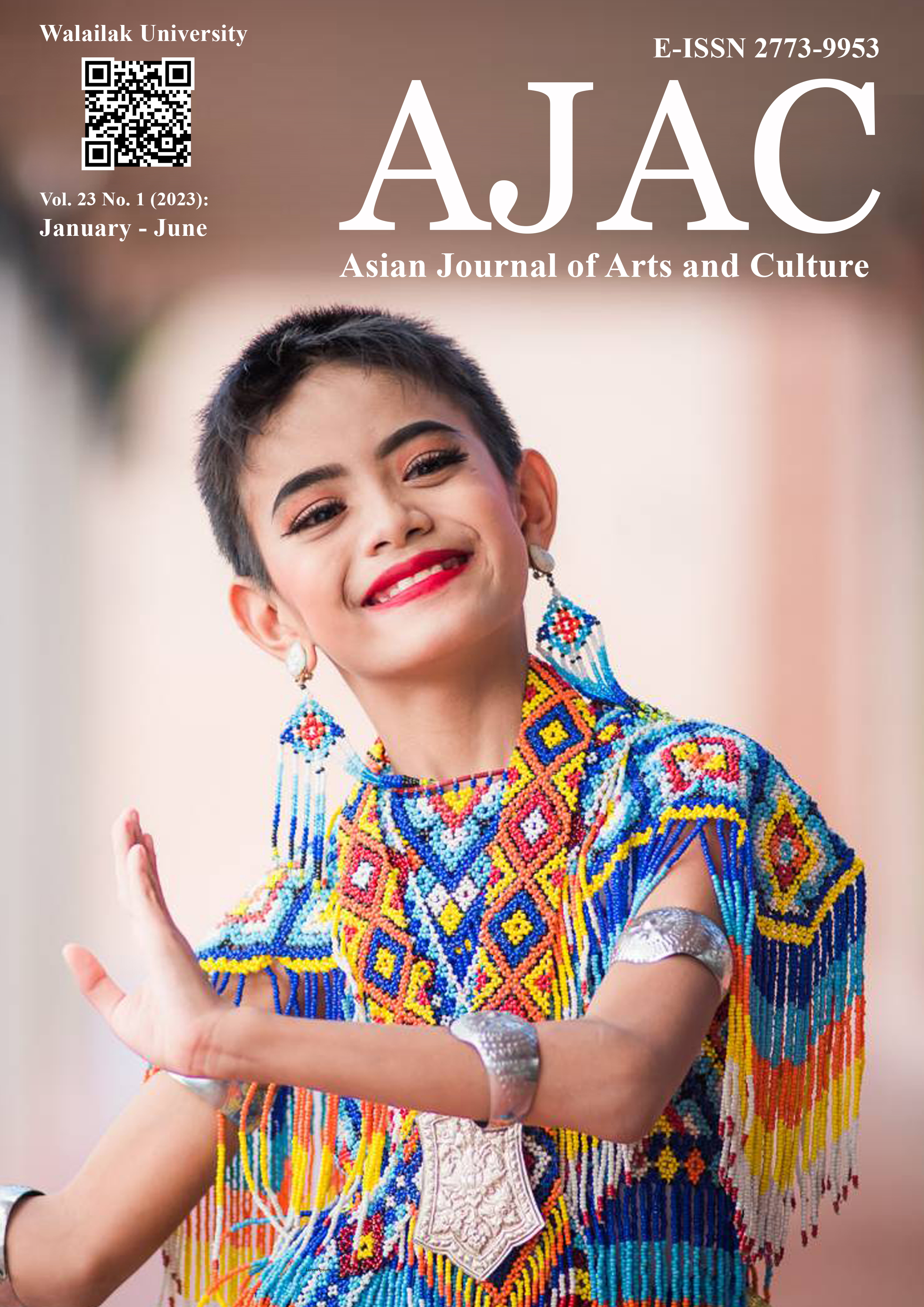Nora Bead Crafting in Nakhon Si Thammarat, Thailand: A Cultural Reproduction for Sustainability
Main Article Content
Abstract
The Nora show started in 1820, using Nora beads to decorate the Nora costumes. Today, Nora beads are created as crafts for ornament in response to the needs of society and consumers. However, due to the changes affecting the social and economic aspects, the preservation and maintenance of crafts like Nora are crucial for sustainability. This article, which is part of a larger study on “Nora Bead Crafting: Cultural Capital and Creative Folklore”, is designed as analytical descriptive research with qualitative data analysis. The data for this study was collected using in-depth interviews and focus group discussions participated by Nora bead crafters in Muang District, Nakhon Si Thammarat Province. The findings revealed that Nora, a local performing art of the Southern part of Thailand, preserved and maintained the Nora identity and numerous belief systems. The crafters designed their products by changing the colours, shapes, and patterns and using the materials in stringing or embroidering the beads. The creation of the Nora beads in these new ways is considered a reproduction of culture in four aspects—production, dissemination, consumption, and reproduction.
Article Details

This work is licensed under a Creative Commons Attribution-NonCommercial-NoDerivatives 4.0 International License.
© 2018 by Asian Journal of Arts and Culture, Walailak University. All rights reserved.
References
Chaisuwan, B., & Wangsuk, K. (2016). Ancient Beads of the South Thailand: The Andaman Coast. Bangkok, Thailand: Institute of the National Museum of Learning.
Changsaan, J. (2000). The Nora Bead Set in Nakhon Si Thammarat Province. Research Report. Nakhon Si Thammarat, Thailand: Rajabhat University Nakhon Si Thammarat.
Department of Culture Promotion, Ministry of Culture. (2015). Culture, Ways of Life and Local Wisdom. Bangkok, Thailand: Rungsilp Printing House.
Dittapan, W. (2014). Phra Upakut: continuation and Reproduction of the Belief, Legends, and Rituals in Current Thai Society. (Ph.D. Dissertation, Chulalongkorn University, Thailand).
Fakhimi Anbaran, F. (2016). “A Whole Way of Life”: Ontology of Culture from Raymond Williams’s Perspective. International Letters of Social and Humanistic Sciences https://doi.org/10.18052/www.scipress.com/ILSHS.67.46
Kittiarsa, P. (2003). Anthropology and Study of the Thai Phenomenon of Yearning for the Past in Contemporary Thai Society. Bangkok, Thailand: Princess Maha Chakri Sirindhorn Anthropology Centre ( Public Organization).
National Economic and Social Development Board, Office of the Prime Minister. (2016). The 12th National Economic and Social Development Plan B.E. 2560-2564. Retrieved from http://www.Nesdb.go.th/ewt_dl_link.php?nid=6422
Pengchai, T., Ingkam, A., & Nimala, N. (2016). The Creative Process of Developing Identity Through Native Textile Handicraft: The World Heritage Site of Luang Prabang. Pertanika Journal of Social Sciences and Humanities, 24(S),159-168.
Petchkaew, C. (2016). Nora: Preservation and Development. Walailak University Abode of Culture Journal, 16(1), 3-13.
Pongpaiboon, S. (1986). Southern Culture Encyclopedia, Vol 5. Songkla, Thailand: The Institute for Southdern Thai Studies, Srinakharinwirot, Songkla.
Southern Region Local Database. (2018). Manohra. Retrieved from https://clib.psu.ac.th/southerninfo/content/2/bae72ee9
Williams, R. (2004). Cultures and Societies in a Changing World. Thousand Oaks, USA: Pine Forge Press.
Interview
Kerdkliang, S. (2020, March 7). Personal communication [personal interview]
Nuukaew, N. (2020, March 9). Personal communication [personal interview]
Suwannapakdi, W. (2020, March 7). Personal communication [personal interview]


